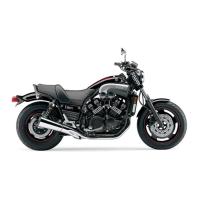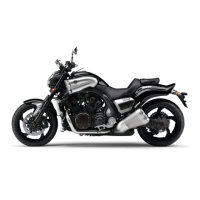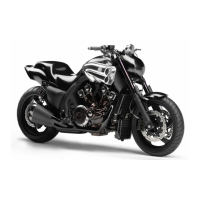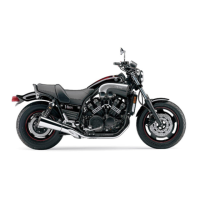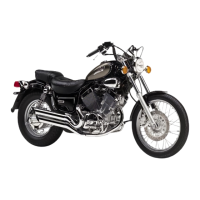Do you have a question about the Yamaha VMAX VMX17 and is the answer not in the manual?
Welcomes the owner, emphasizes reading the manual for operation, inspection, and maintenance.
Explains the meaning of symbols like WARNING, NOTICE, and TIP for conveying critical information.
Details the safety alert symbol used to indicate potential personal injury hazards.
Stresses owner's duty for safe operation, need for training, and following manual guidelines.
Covers pre-operation checks, posture, visibility, speed limits, and avoiding impairment.
Advises on wearing helmets, eye protection, and protective clothing to minimize injury risk.
Outlines the steps and conditions required to start the motorcycle's engine.
Explains the importance of gear shifting for controlling power and shows gear positions.
Details crucial procedures and limitations during the initial engine break-in phase.
Stresses that regular checks, adjustments, and lubrication ensure vehicle safety and performance.
Details scheduled maintenance for emission control components based on mileage.
Outlines routine maintenance tasks and lubrication intervals for various parts.
Guides on checking engine oil level and performing an oil and filter change.
Lists the overall dimensions, seat height, wheelbase, and weight of the motorcycle.
Details engine configuration, displacement, recommended fuel, and tank capacity.
Lists tire sizes, wheel types, and brake system details (fluid, type).
Provides details on suspension travel, electrical system voltage, and battery capacity.
Explains the importance of VIN and engine serial numbers for registration and parts ordering.
Welcomes the owner, emphasizes reading the manual for operation, inspection, and maintenance.
Explains the meaning of symbols like WARNING, NOTICE, and TIP for conveying critical information.
Details the safety alert symbol used to indicate potential personal injury hazards.
Stresses owner's duty for safe operation, need for training, and following manual guidelines.
Covers pre-operation checks, posture, visibility, speed limits, and avoiding impairment.
Advises on wearing helmets, eye protection, and protective clothing to minimize injury risk.
Outlines the steps and conditions required to start the motorcycle's engine.
Explains the importance of gear shifting for controlling power and shows gear positions.
Details crucial procedures and limitations during the initial engine break-in phase.
Stresses that regular checks, adjustments, and lubrication ensure vehicle safety and performance.
Details scheduled maintenance for emission control components based on mileage.
Outlines routine maintenance tasks and lubrication intervals for various parts.
Guides on checking engine oil level and performing an oil and filter change.
Lists the overall dimensions, seat height, wheelbase, and weight of the motorcycle.
Details engine configuration, displacement, recommended fuel, and tank capacity.
Lists tire sizes, wheel types, and brake system details (fluid, type).
Provides details on suspension travel, electrical system voltage, and battery capacity.
Explains the importance of VIN and engine serial numbers for registration and parts ordering.
| Engine Type | Liquid-cooled, 4-stroke, DOHC, 4-valve, V-type 4-cylinder |
|---|---|
| Displacement | 1679cc |
| Bore x Stroke | 90.0 mm x 66.0 mm |
| Compression Ratio | 11.3:1 |
| Fuel System | Fuel Injection |
| Maximum Torque | 166.8 Nm (17.0 kg-m) @ 6, 500 rpm |
| Ignition | TCI |
| Transmission | 5-speed |
| Final Drive | Shaft |
| Front Suspension | Telescopic fork |
| Wheelbase | 1, 700 mm |
| Seat Height | 775 mm |
| Weight | 310 kg (wet) |
| Length | 2, 395 mm |
| Width | 820 mm |
| Height | 1, 190 mm |
| Maximum Power | 147.2 kW (200 PS) @ 9000 rpm |
| Front Brake | Dual disc, 320 mm |
| Rear Brake | Single disc, 298 mm |
| Front Tire | 120/70 R18 |
| Rear Tire | 200/50 R18 |
| Fuel Capacity | 15 L |
| Rear Suspension | Swingarm (Link suspension) |
